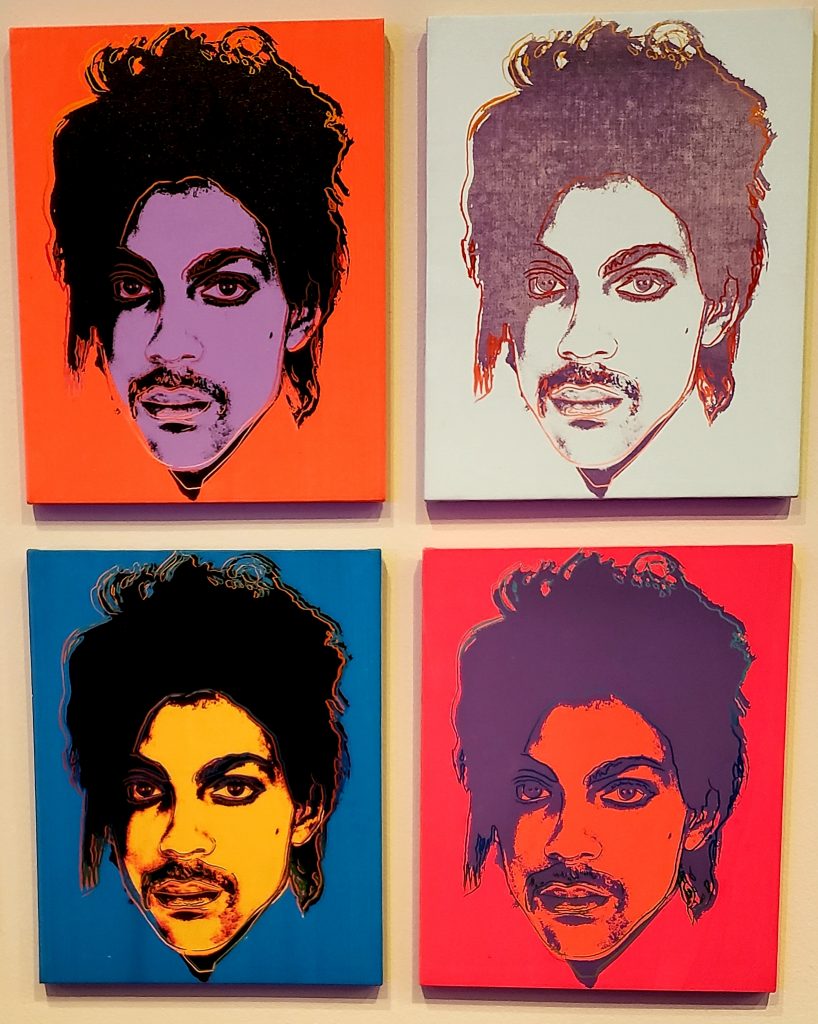Column without end, part 18

By Bart Barry-
Editor’s note: For part 17, please click here
SAN ANTONIO – This city’s McNay Art Museum, which
has figured heavily (for an art museum) in this ostensibly-about-boxing column,
since 2010, recently opened an exhibition, Andy Warhol: Portraits, that appears
to have no tie-in whatever to our beloved sport. I revisited the exhibition a few hours before
writing this, unable to imagine a suitable subject, and sat so long at a lobby
table afterwards a friendly security guard came over to tell me I looked tired. Let that temper what you expect of this.
Nearly a decade ago The McNay had a different
Warhol exhibition that opened round about the time “Son of the Legend” Julio
Cesar Chavez Jr. put the wood to “Irish” John Duddy in Alamodome, in what would
be Duddy’s final prizefight. The editor
of a boxing magazine asked me to pitch him a unique idea for a story –
“anything out of the ordinary” – and I complied with an idea about this Warhol
exhibition, a visual dissection of Warhol’s fascination with celebrity and its
effect, being open in the same city at the same time as boxing’s greatest beneficiary
of celebrity. The pitch went nowhere, a
destination shared by the story I wrote instead for the magazine, and I made a
column of the idea.
(Actually, a quick search through the archives
reveals barely half of what’s above is accurate; “Andy Warhol: Fame and
Misfortune” opened in February 2012, not June 2010, and since by then Chavez
Jr. had beaten Duddy and Sebastian Zbik and Peter Manfredo, perhaps a story
attributing the whole of Chavez’s fortune to name recognition wasn’t the crackerjack
idea memory recalls.)
Out of the parenthetical but influenced by it: Memory
is many parts imagination, something confirmed by most adult accounts of childhood
that begin “I see myself . . .” as if that’s what children do when, say, riding
a bike – look at themselves, instead of their front tire or whatever terrain it
touches.
If Warhol never directly addressed memory’s inaccuracy,
and perhaps he did somewhere, prolific as he was, he understood part of the
appeal of his portraits to their subjects lay in a capacity for overwriting
memories. Warhol was a favorite
portraitist of aging celebrities because his minimalist approach to depicting
facial skin removed wrinkles and most blemishes (except for his Dolly Parton
portraits, which are better than the Marilyn Monroe portraits precisely because
Parton’s face had more imperfections).
Warhol very much made art for life to imitate and prophesied our
contemporary socialmedia obsession in any of his dozens of commentaries about
Americans and fame.
Floyd Mayweather would look good in a Warhol
portrait, methinks. I happened on a Fox
Sports promotional movie about Manny Pacquiao last week by accident and tried
to see Mayweather through his fans and commentators’ eyes, being removed as we
are now from the relevance of Mayweather’s schtick. What I looked for was elegance; what little I
recall of his victory over Pacquiao was Pacquaio’s unwillingness to throw
punches and subsequent inability to strike Mayweather, our defensive wizard. But what I saw instead of elegance was skittishness. Not during or after Mayweather got hit but
when the prospect of his getting hit happened: Confident-to-flinching-to-confident-to-flinchyflinching. It was not elegant.
Of course this was a movie to sell us Pacquiao’s
upcoming tilt with Keith Thurman, and it behooves nobody at Fox to concede
Pacquiao is diminished from the man who got whitewashed by Mayweather, a man
who was fractionally potent as the one who dashed through Barrera and Morales
and Marquez. Still. In hyperdefinition, Mayweather’s
squinchyfaced pullback looks nigh bitchy.
Warhol would remove that. If Warhol was not quite enamored of money as
Mayweather claims to be, he was doubly enamored of money’s effect, and Mayweather’s
selfstyled fixation on money might’ve enchanted Warhol with a question like: If
a man who is by no means the world’s best at making money allowed the last 1/3
of his career to be consumed by making money, a man who was the world’s best at
his actual craft, does that make money omnipotent or the man cynical?
This is why I looked tired in the lobby. A different range of thoughts happened on the
short, slow drive from The McNay to The Pearl, where this column got wrote: Is
the racing line elegant? is the racing line what Henri Matisse was after? is
Matisse better than Warhol, for eliminating pathways to imitation, or is Warhol
better, for spawning generations of imitators? how much should even a column
such as this be dedicated to a concept, the racing line, you understand at best
partially?
The racing line is a way automobiles may go
fastest round curves. It’s not the
shortest distance, as that would be the inside line, and it’s not a good way to
go at a constant speed. Rather, it’s
effectively the straightest way to go round a halfcircle – start wide, cut the
apex, end wide – and by being the straightest line it is the route that allows
the earliest moment of maximum acceleration.
If you regularly take the racing line against fellow motorists on your
local freeway you will pass most of them so long as you do not use cruise
control (which renders the racing line counterproductive).
The racing line is almost elegant the way Warhol
is almost elegant. Neither the racing
line nor Warhol is elegant as a Matisse line; the racing line and Warhol do
something worth doing more quickly than other approaches. The racing line kept through a full circuit
is nearer Matisse than Warhol came; Warhol was the racing line through a single
curve, maybe two. The Matisse line,
though, is the racing line taken through an unknown circuit drawn but a moment
before.
Tire, tiring, tired.
Bart Barry can be reached via Twitter @bartbarry